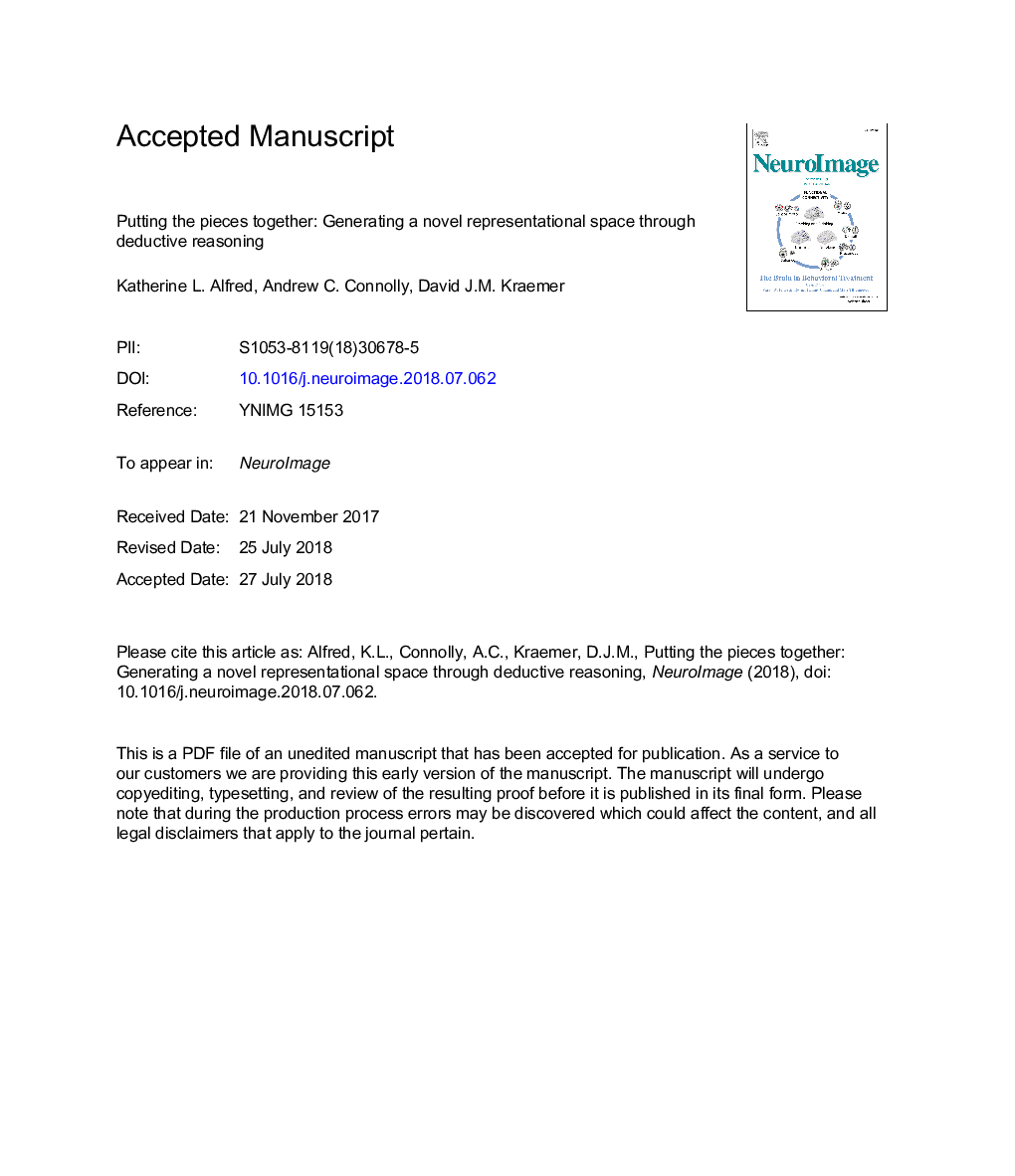| کد مقاله | کد نشریه | سال انتشار | مقاله انگلیسی | نسخه تمام متن |
|---|---|---|---|---|
| 8686581 | 1580829 | 2018 | 47 صفحه PDF | دانلود رایگان |
عنوان انگلیسی مقاله ISI
Putting the pieces together: Generating a novel representational space through deductive reasoning
ترجمه فارسی عنوان
قرار دادن قطعات با هم: ایجاد یک فضای بازرسی جدید از طریق استدلال قیاسی
دانلود مقاله + سفارش ترجمه
دانلود مقاله ISI انگلیسی
رایگان برای ایرانیان
کلمات کلیدی
استدلال انتقالی، تجزیه و تحلیل شباهت نمایشی، سوزن داخل قطعه ای
موضوعات مرتبط
علوم زیستی و بیوفناوری
علم عصب شناسی
علوم اعصاب شناختی
چکیده انگلیسی
How does the brain represent a newly-learned mental model? Representational similarity analysis (RSA) has revealed the neural basis of common representational spaces learned early in development, such as categories of natural kinds. This study uses RSA to examine the neural implementation of a newly-learned mental model-i.e., a representational space created through deductive reasoning-and study the structure of previously found parietal activity in reasoning tasks. Specifically, all the information in this mental model could only be obtained through abstract transitive reasoning, as there were no predictive differences between observable features in the stimuli, and stimuli were counterbalanced across participants. Participants were shown unfamiliar face portraits paired with names and asked to learn about the height of each person pictured in the portraits through comparison to other individuals in the set. Participants learned the relative heights only of adjacent pairs in the set and then used transitive reasoning to generate a linear ranking of heights (e.g., “Matthew is taller than Thomas; Thomas is taller than Andrew; therefore Matthew is taller than Andrew”). During fMRI, participants recalled the approximate height of each individual based on these inferences. Using a predictive model based on the relative heights of the set of individuals, RSA revealed three brain regions in the right hemisphere that encoded this newly-learned representational space, located within the intraparietal sulcus, precuneus, and inferior frontal gyrus. These findings demonstrate the value of RSA for analyzing structure within patterns of activity and support theories asserting that logical reasoning recruits spatial processing mechanisms.
ناشر
Database: Elsevier - ScienceDirect (ساینس دایرکت)
Journal: NeuroImage - Volume 183, December 2018, Pages 99-111
Journal: NeuroImage - Volume 183, December 2018, Pages 99-111
نویسندگان
Katherine L. Alfred, Andrew C. Connolly, David J.M. Kraemer,
